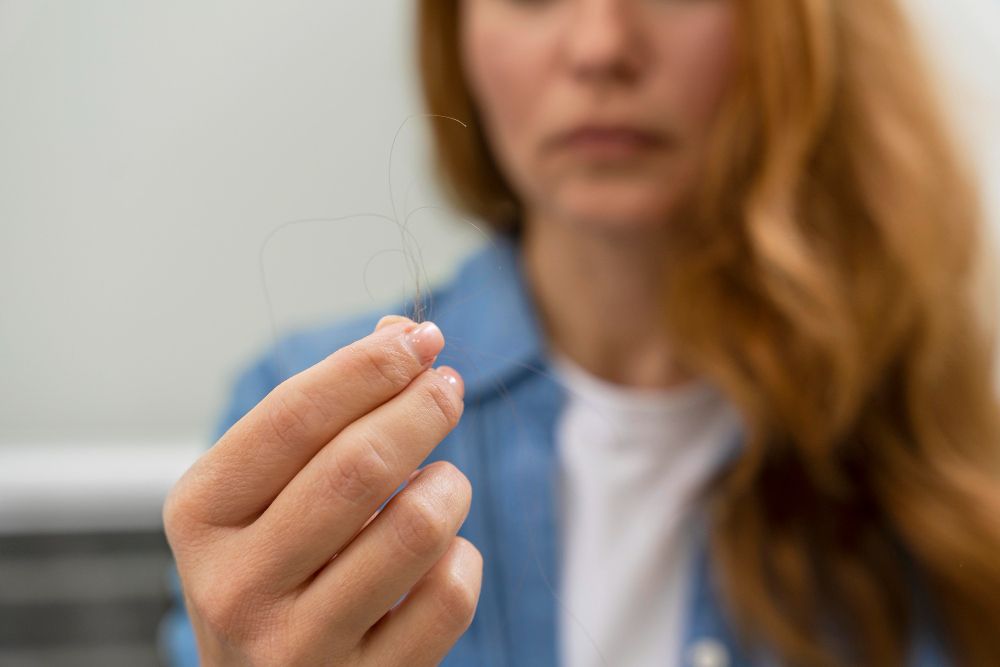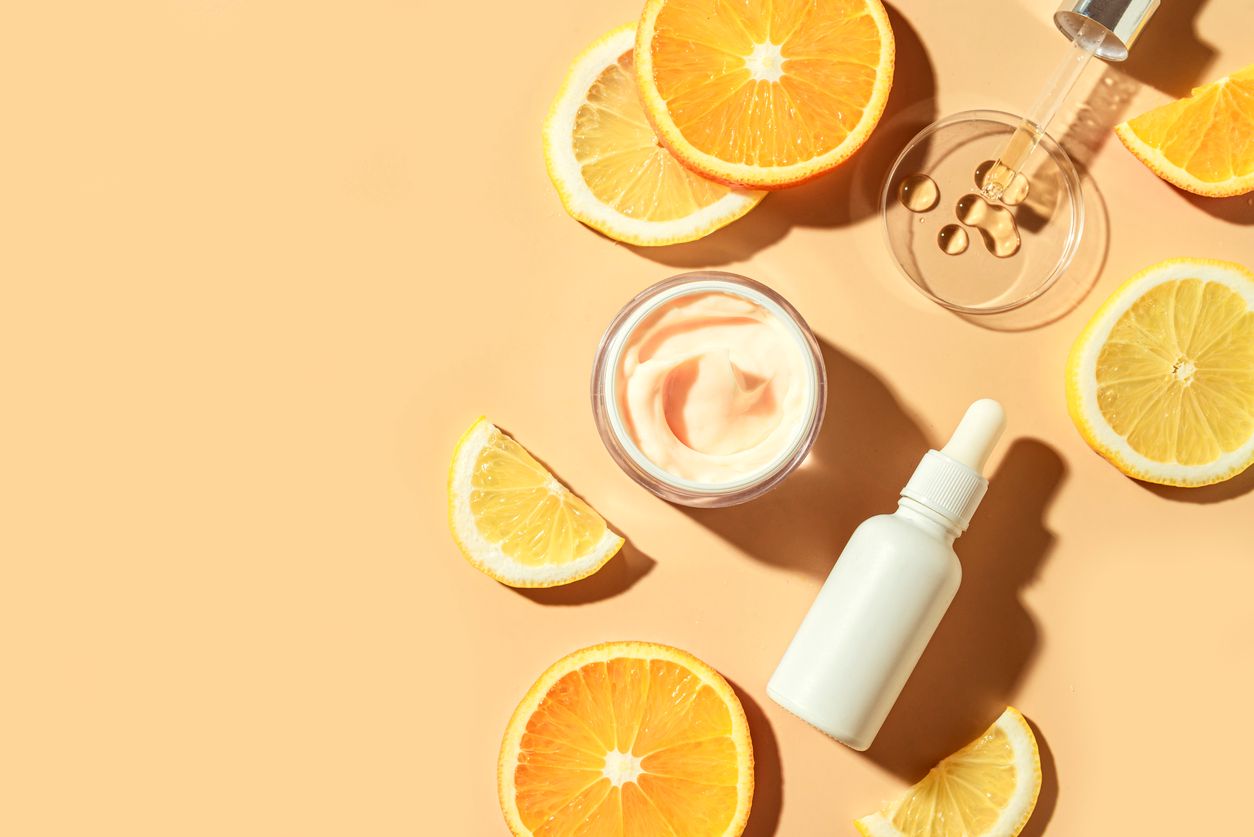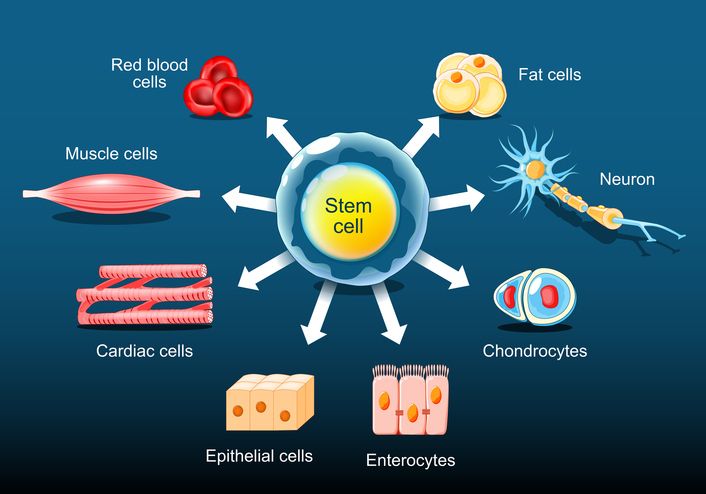
Author: Natalie Ng|Updated: 22 May 2025
Hair falling out after pregnancy is something most women notice in the first few months after giving birth. It’s usually part of a normal hair growth cycle, but that doesn’t make it feel any less alarming—especially when you're seeing more hair in the shower drain or on your brush than usual. This type of increased hair loss, known as postpartum hair loss or telogen effluvium, happens as pregnancy hormones drop and hair shifts from the growing phase (anagen) to the resting phase (telogen). During pregnancy, high hormone levels often keep many hairs in the growing phase longer than usual, which makes your hair appear fuller. But once those hormones level out after delivery, many hairs enter the shedding phase at the same time. That’s when hair shedding picks up and total volume can feel noticeably reduced. This shift is a normal part of the postpartum period, but a healthy diet can help slow postpartum hair loss and support hair regrowth. Nutrients like iron, biotin, and omega-3s support hair health and may help prevent postpartum hair loss from lingering longer than it should. Eating well during this transitional phase helps your hair grow stronger as it returns to its pre-pregnancy state. Keep reading to see which nutrients support normal hair growth and may help reduce excessive shedding. Each one plays a different role in helping your hair grow back thicker and healthier.

Iron Helps Prevent Postpartum Hair Loss and Supports Hair Regrowth

Importance of iron in slowing postpartum hair shedding
Iron plays a big part in supporting hair health after pregnancy. During the months after giving birth, many women experience postpartum hair loss due to shifting hormone levels. But if iron levels are also low, it can lead to more hair falling out than expected.
Iron helps carry oxygen to the scalp and hair roots. This supports normal hair growth and helps the follicles stay in the growing phase (anagen) instead of moving too quickly into the transitional catagen phase and then the resting phase (telogen). Low iron can trigger or worsen telogen effluvium, a type of hair shedding common after pregnancy.
Daily iron needs and food sources
Most women need around 18mg of iron per day. You can get this from lean meats like beef and turkey, or plant-based options like lentils, tofu, and spinach. If you eat mostly plant-based meals, try pairing iron-rich foods with vitamin C, such as citrus or bell peppers, to help your body absorb the iron better.
Iron deficiency and hair shedding
Iron deficiency is one of the more common causes of excessive shedding in new moms. It can affect hair loss by weakening the follicles and slowing down regrowth. If you feel more tired than usual, or notice that your hair falls in larger amounts, it may be worth checking your iron levels.
Iron supplements can help if your diet isn’t enough, but it’s best to speak to a doctor first for an accurate diagnosis and safe dosage. Consulting a doctor for an accurate diagnosis and effective treatment is crucial if iron deficiency is suspected.
Link between biotin and postpartum hair shedding
Biotin (vitamin B7) plays a key role in keeping your hair strong during the months after pregnancy. It supports the natural production of keratin, helping your hair strands stay resilient as your body adjusts to changing hormone levels. When biotin levels drop, the scalp may struggle to maintain the normal hair growth cycle, which can lead to more hair falling out after pregnancy.
Many new moms may lose more hair than usual due to hormonal changes, experiencing postpartum hair loss as their hair shifts from the growing phase to the resting phase. Getting enough biotin helps support the return to normal hair growth and may reduce excessive shedding during this transition.
How much biotin you need daily
Most women need between 30 to 35 micrograms of biotin each day, especially while breastfeeding. Some doctors may suggest higher doses—up to 5,000 mcg—for short-term support if hair loss becomes more noticeable. If you’re considering supplements, speak with your healthcare provider first to make sure the dosage suits your needs.
You can also get biotin through food. Eggs, almonds, sunflower seeds, sweet potatoes, and salmon are rich in biotin and easy to include in daily meals. These foods support overall hair health while helping you meet your nutrient needs.
Improve absorption for better results
To help your body absorb biotin effectively, take it with healthy fats like avocado or olive oil. Avoid eating raw egg whites, which can block biotin absorption. For supplements, take them with your main meal, and space them out from medications like antibiotics that may interfere.

Vitamin D Strengthens Hair Follicles After Pregnancy
How vitamin D supports the normal hair growth cycle
Vitamin D plays a direct role in keeping hair follicles healthy and active. After pregnancy, many hairs shift into the resting phase (telogen) at the same time, which is why most women will lose hair within a few months of giving birth due to hormonal changes. Vitamin D helps the follicles return to the growing phase (anagen) more efficiently, supporting hair regrowth as hormone levels adjust.
It also helps regulate the skin’s immune response and reduce inflammation in the scalp—two factors that can affect hair loss and slow postpartum hair recovery if not addressed.
Daily intake and natural sources
To support hair health, most women need 600–800 IU of vitamin D per day. You can get part of this from brief sun exposure—around 10 to 15 minutes on your arms and legs, two to three times per week, outside of peak UV hours. During the cooler months or if you're mostly indoors, food and supplements play a bigger role.
Fatty fish like salmon and mackerel, egg yolks, and fortified dairy or plant-based milks are reliable sources. If your diet doesn’t cover your needs, a low-dose supplement can help support your recovery.
Book Now to Experience
F8 Hair Regrowth Treatment
1 Minute Self-Registration
Date should not be before minimal date

Omega-3s Support Scalp Health and Reduce Excessive Shedding
Importance of omega-3s during the postpartum shedding phase
Omega-3 fatty acids play a direct part in keeping your scalp healthy and balanced during post-pregnancy recovery. As hair enters the telogen phase and shedding increases, losing hair during this phase is a natural and temporary condition. A hydrated scalp with reduced inflammation helps encourage hair to return to its growing phase.
These essential fats also support the natural oil barrier on your scalp, which protects the hair shaft and helps reduce breakage. By supporting the skin around each follicle, omega-3s help maintain the conditions needed for normal hair growth and regrowth.
Omega-3 sources for daily meals
Include omega-3-rich foods like salmon, sardines, chia seeds, flaxseeds, and walnuts throughout the week. A couple of servings of fatty fish per week are usually enough to provide strong support for your scalp and hair.
If you follow a plant-based diet or don’t eat seafood, an algae-based omega-3 supplement is a reliable alternative. These support healthy hormone levels and nourish the scalp—both of which are important in slowing postpartum hair loss.

Zinc Supports Hair Follicle Repair and Strengthens Regrowth

Importance of zinc in managing postpartum hair shedding
Many new mothers experience losing hair due to hormonal changes after childbirth. Zinc helps repair tissue and supports the growth of new cells, including those that form the base of each hair strand. During the postpartum period, many hairs move into the telogen phase, which increases overall hair shedding. Zinc encourages the return to the growing phase by supporting protein production and stabilizing hormone fluctuations that affect hair loss.
This mineral also plays a part in maintaining the scalp’s oil glands. A stable oil barrier around the follicles reduces dryness and inflammation, which helps limit excessive shedding and supports a healthier scalp environment for new hair to grow.
Zinc-rich foods for daily recovery
Most women need 8–11mg of zinc per day. During breastfeeding, the requirement rises by around 4mg. Oysters provide the highest concentration, but other accessible sources include pumpkin seeds, chickpeas, cashews, lentils, and beef.
Zinc from animal products is easier for the body to absorb. If you follow a plant-based diet, combine zinc-rich foods with sources of vitamin C, like bell peppers or citrus, to improve absorption. If your intake remains low or you experience continued postpartum hair loss, speak with your healthcare provider about zinc supplementation.

Vitamin C Strengthens Hair Strands and Improves Iron Absorption
Importance of vitamin C in postpartum hair recovery
Vitamin C plays two major roles in supporting hair health after pregnancy. First, it helps the body produce collagen—a structural protein that strengthens hair strands and supports the hair shaft from the root. Without enough collagen, new hair may grow in weaker and more prone to breakage, especially during the months when many hairs are lost.
Second, vitamin C improves the absorption of iron. Since iron deficiency is one of the most common causes of increased hair loss after giving birth, pairing vitamin C with iron-rich foods helps the body use those nutrients more effectively. This is especially important for new mothers who are replenishing iron levels after delivery.
Vitamin C intake and food combinations
Aim for 75–100mg of vitamin C per day. This is easy to achieve through food without needing supplements. One medium orange provides about 70mg. Other strong sources include strawberries, bell peppers, kiwi, guava, and leafy greens.
Pair iron sources like spinach, red meat, or lentils with vitamin C-rich foods during meals to help boost nutrient uptake. For example, adding bell peppers to a lentil salad or squeezing lemon over sautéed spinach helps improve the way your body absorbs iron—supporting stronger hair and reducing excessive shedding over time.
Book Now to Experience
F8 Hair Regrowth Treatment
1 Minute Self-Registration
Date should not be before minimal date

Protein Builds the Structure for New Hair Growth
Importance of protein in restoring normal hair growth after pregnancy
Hair is made mostly of keratin, a type of protein. During the postpartum period, new mums need enough protein to support hair regrowth. Your body shifts its focus to recovery and milk production, which can sometimes limit the nutrients available for non-essential functions like hair regrowth. Without enough protein, the hair growth cycle slows down, and the shedding phase may last longer than usual.
Protein supports the anagen phase—the active growing stage—and gives your body the materials it needs to form new, strong strands. It also helps repair hair that has been weakened by hormone shifts, making it easier to move from hair loss back to a healthier growth rhythm.
Daily protein needs and practical sources
Aim for at least 0.8 grams of protein per kilogram of body weight. If you're breastfeeding or physically active, you may need slightly more to support both recovery and healthy hair regrowth. Spread your protein intake throughout the day rather than getting it all in one meal to improve absorption.
Complete protein sources include lean meats, eggs, fish, dairy, soy, and quinoa. If you follow a plant-based diet, combine foods like beans and rice or hummus and whole-grain bread to ensure you’re getting all nine essential amino acids. Snacks like boiled eggs, yogurt, or a handful of hemp seeds are also easy ways to keep your intake steady across meals.

Vitamin E Protects Hair Follicles and Supports a Healthy Scalp

Importance of vitamin E in managing postpartum hair shedding
Vitamin E acts as an antioxidant that helps protect hair follicles from oxidative stress—a factor that can delay hair regrowth after giving birth. During the postpartum shedding phase, many people notice increased hair shedding, as the scalp may be more sensitive and the follicles more vulnerable. Vitamin E supports the scalp’s barrier function by locking in moisture and helping maintain a stable environment for new growth.
It also improves blood circulation in the scalp, which helps deliver nutrients more efficiently to the hair roots. This is especially important during the months following childbirth, when many hairs are going through the telogen phase and need additional support to re-enter the growing stage.
Daily sources of vitamin E for hair health
Aim for around 15mg of vitamin E per day. You can easily reach this amount through food. Almonds, sunflower seeds, avocados, spinach, and olive oil are rich in vitamin E and simple to include in your daily meals.
Snack on a handful of nuts, drizzle olive oil over vegetables, or blend avocado into a smoothie. These small additions provide antioxidant support that strengthens follicles and encourages normal hair growth while slowing excessive shedding.

Selenium Defends Hair Follicles and Supports Hormone Balance
Importance of selenium during the postpartum shedding phase
Selenium is a trace mineral that helps protect hair follicles from damage and supports the thyroid, which regulates many of the hormones that affect hair growth. After giving birth, hormone levels shift significantly, and the thyroid may take time to return to its pre-pregnancy levels. Since the thyroid influences the hair growth cycle, even mild imbalances can lead to more noticeable hair shedding.
Selenium also helps reduce oxidative stress, which can affect the scalp and slow the transition from the resting phase back into active growth. By supporting cellular function and hormone regulation, selenium plays a quiet but essential role in helping new hair grow in stronger.
Selenium intake and food sources
Most women need around 55–70 micrograms of selenium per day. Brazil nuts are the richest natural source—just one or two nuts can meet your full daily requirement. Other good options include tuna, sardines, halibut, and eggs.
While selenium supplements exist, it’s important not to overdo it, as high doses can be harmful. Stick to food sources where possible and speak with your healthcare provider before adding a supplement, especially if you're already taking a postnatal multivitamin that contains selenium.
Book Now to Experience
F8 Hair Regrowth Treatment
1 Minute Self-Registration
Date should not be before minimal date

Vitamin B12 Fuels Hair Growth and Supports Follicle Recovery
Importance of vitamin B12 in postpartum hair regrowth
Vitamin B12 helps produce red blood cells, which carry oxygen to the scalp and hair follicles. This oxygen supply supports the energy your body needs to rebuild and grow new hair after pregnancy. When B12 levels are low, the follicles may not receive enough oxygen, which can slow the transition back to the growing phase and increase hair shedding.
During the postpartum period, increased demand for nutrients—especially in breastfeeding mothers—can make it harder to maintain optimal B12 levels. Supporting this pathway helps strengthen new strands and encourages the return of the normal hair growth cycle.
B12 sources for daily recovery
Vitamin B12 is found in animal-based foods, including eggs, lean meats, dairy, and fish. Fortified cereals and plant-based milk can help if you're vegetarian or vegan. Most women can meet their needs through diet, but if you're following a plant-based routine, a supplement may be needed to avoid deficiency.
Include B12-rich foods across the day—for example, eggs at breakfast, yogurt as a snack, and lean beef or fish at dinner. If your diet limits these options, talk with your doctor about a supplement that fits your postpartum needs.

Bringing Back Hair Volume After Pregnancy

Simple changes that support visible hair recovery
While nutrients lay the foundation for long-term hair regrowth, small daily habits can also make a difference in how your hair looks and feels as it moves through the postpartum shedding phase. After giving birth, most women will notice more hair in the shower drain, or experience sudden drops in total volume. This is part of the normal hair growth cycle—but certain styling practices can help your hair appear fuller in the meantime.
Use a gentle, volumizing shampoo to cleanse without stripping away natural oils. Follow with lightweight conditioners that won’t weigh strands down. These products support scalp health while helping add body to thinning areas. Avoid tight hairstyles that place pressure on the roots, and stay alert for rare conditions like hair tourniquet syndrome, where strands wrap tightly around a baby’s toe or finger.
You can also try parting your hair differently or using a new hairstyle that creates lift at the roots. While these don’t stop shedding, they can make thin areas less noticeable during the resting stage. Once the shedding phase ends and the growing phase returns, your hair will gradually move back toward its pre-pregnancy state.
By supporting your body with the right nutrients, treating your scalp gently, and making small styling adjustments, you give your hair the best chance to recover—both in appearance and strength.

F8 Hair Regrowth Treatment Supports Recovery From Postpartum Hair Loss
Postpartum hair loss is often linked to hormone shifts that push many hairs into the resting phase (telogen) at once. While nutrients play a major role in restoring balance, in some cases, added support is needed—especially when hair falls in larger amounts or doesn’t begin to grow back after a few months. This is where a treatment like F8 Hair Regrowth can help.
How the F8 Hair Regrowth Treatment works
F8 is a non-invasive hair and scalp treatment designed to improve circulation, strengthen hair follicles, and create the ideal environment for hair regrowth. It uses low-level laser energy combined with a high-quality hair growth serum. The treatment targets the scalp directly, stimulating weakened follicles, activating the hair papilla, and strengthening nearby capillaries. These effects help re-energize the growth cycle, reduce excessive shedding, and support long-term scalp health.
The treatment begins with a scalp analysis using magnification to examine follicle health and assess areas of concern. Once confirmed, a trained therapist applies low-energy laser across the scalp, followed by the infusion of a serum that hydrates the scalp, unclogs follicles, and calms excess oil production. Together, this process supports new hair development and can shorten the recovery period from hair falling out after pregnancy.
Advantages of the F8 treatment for new mothers
• Non-invasive: No surgery, no needles, and no recovery time—ideal for new moms adjusting to life after giving birth.
• Improves microcirculation: Boosts blood flow to the scalp to supply nutrients that support the normal hair growth cycle.
• Balances the scalp: Reduces sebum buildup and keeps the water-oil balance in check, creating a clean base for new hair to grow.
• Safe for most people: Suitable for both women and men experiencing thinning hair, with no downtime required.
For new mothers dealing with increased hair loss, the F8 Hair Regrowth Treatment offers an effective, gentle way to support visible recovery—especially when combined with a healthy diet and proper postpartum care.
Book F8 today to start restoring your scalp and hair volume.Book Now to Experience
F8 Hair Regrowth Treatment
1 Minute Self-Registration
Date should not be before minimal date
FAQ
1. Can stress after pregnancy affect hair loss?
Yes, emotional and physical stress from childbirth, sleep disruption, and adjusting to life with a new baby can all impact hormone levels and trigger or prolong telogen effluvium. Stress can delay the return of the normal hair growth cycle, making hair fall out more than expected. Managing stress through rest, hydration, and proper nutrition supports overall hormone recovery and hair health.
2. Is it normal to see hair clumps in the shower during postpartum shedding?
Seeing more hair in the shower drain during the first few months after giving birth is a common experience. While it may feel alarming, it’s often part of the normal shedding phase triggered by pregnancy hormones. A person typically loses 50–100 strands daily, but this can temporarily increase to 300 or more during postpartum hair loss. If it continues beyond six months or the scalp becomes visible, consider speaking with a professional.
3. Can certain hairstyles cause more hair loss after pregnancy?
Yes, tight hairstyles like ponytails, buns, and braids can place tension on weakened follicles, increasing hair breakage and loss, especially during the shedding phase. This is sometimes referred to as traction alopecia. Switching to looser styles or trying a different hairstyle that adds volume without pulling at the roots can help protect new growth and support overall hair recovery.
4. Will using volumizing shampoo or lightweight conditioners help during postpartum hair loss?
Volumizing shampoos and lightweight conditioners can help make thinning hair appear fuller during the shedding stage. These products add body without weighing down the strands, which is especially helpful when total volume has decreased. While they don’t stop hair loss, they support the appearance of thicker hair while your normal growth cycle returns.
5. What is the difference between postpartum hair shedding and long-term hair loss?
Postpartum hair shedding usually begins around two to three months after giving birth and is temporary. It’s driven by hormonal changes and typically resolves within six to twelve months. Long-term or chronic hair loss, on the other hand, may be caused by ongoing hormone imbalances, nutritional deficiencies, or genetic conditions. Accurate diagnosis by a professional is important if shedding continues or worsens after the usual recovery period.
Recommended Articles
COPYRIGHT© NEW BEAUTY MANAGEMENT LIMITED 2025. ALL RIGHT RESERVED.




